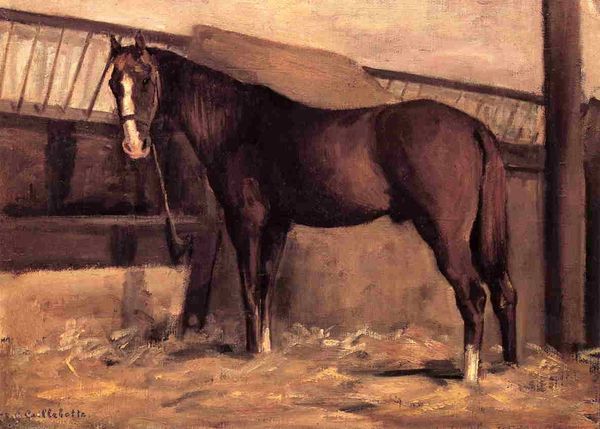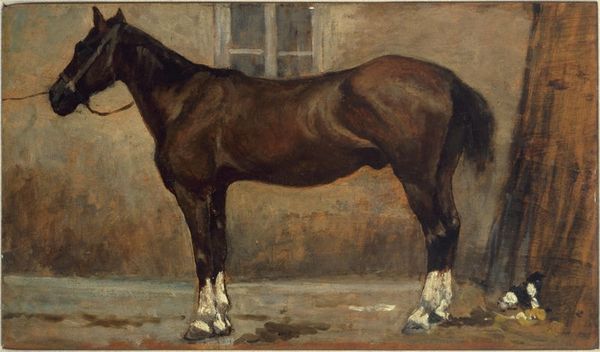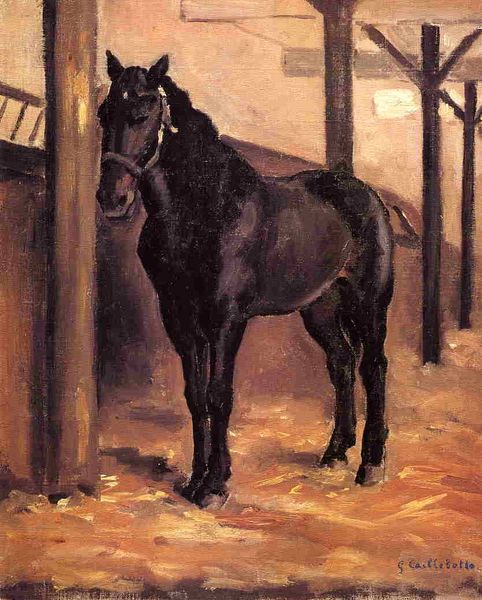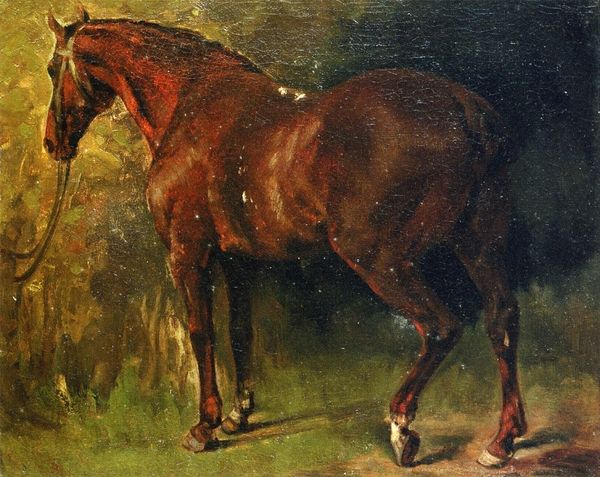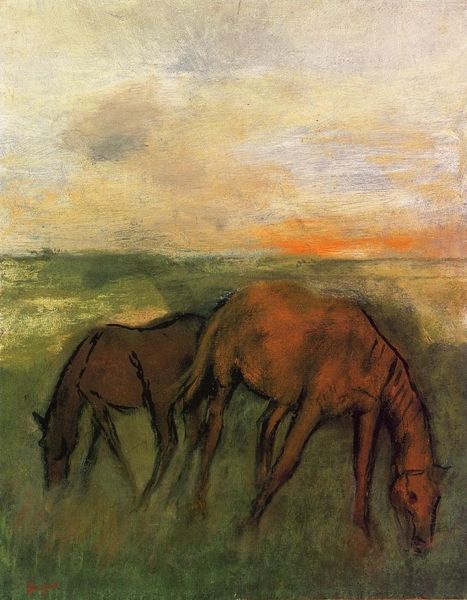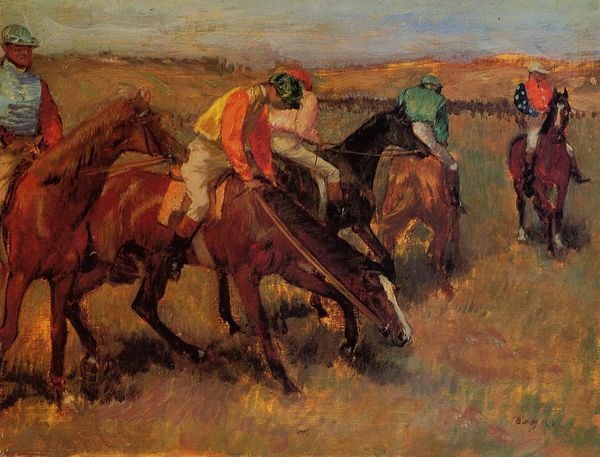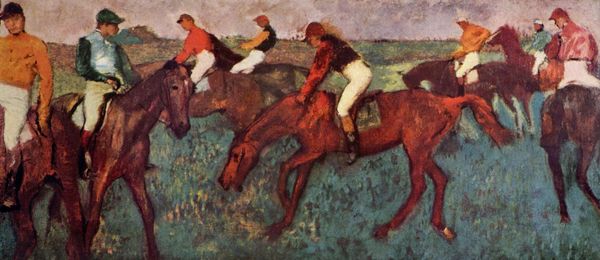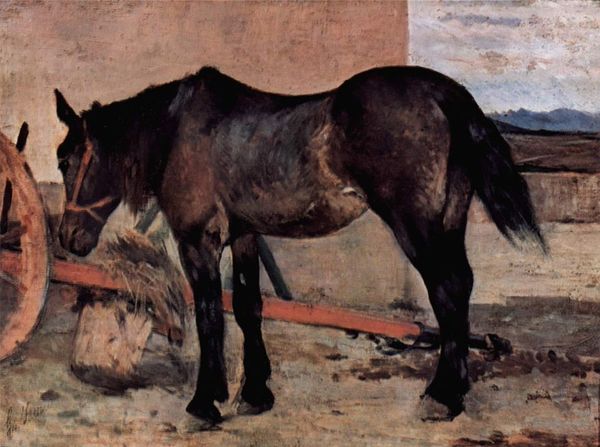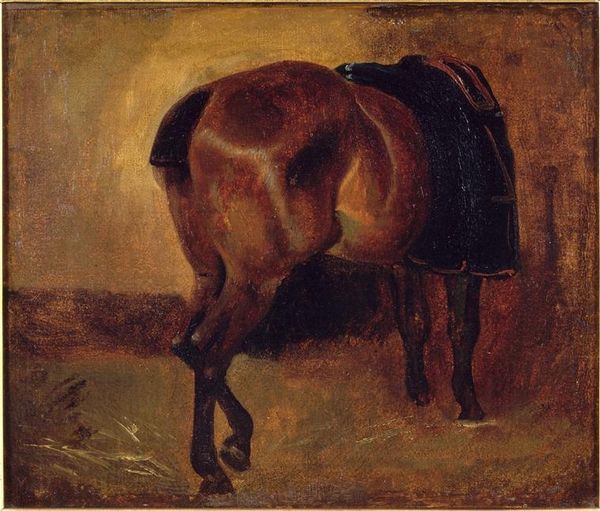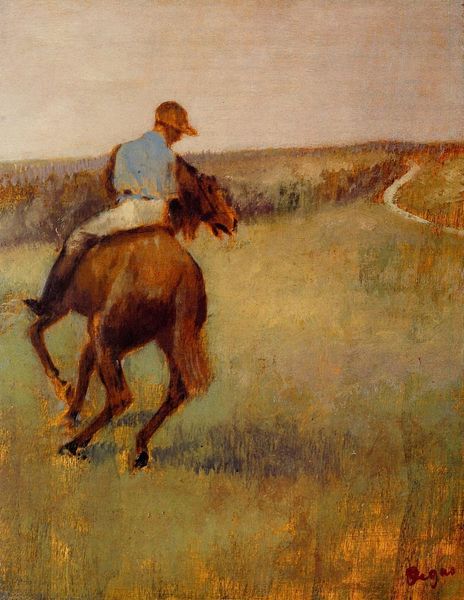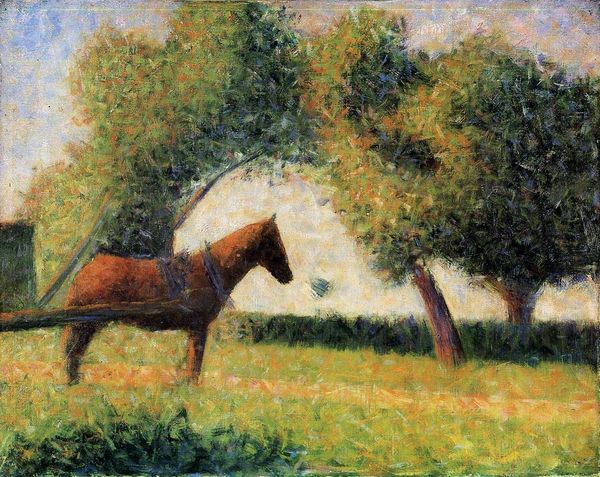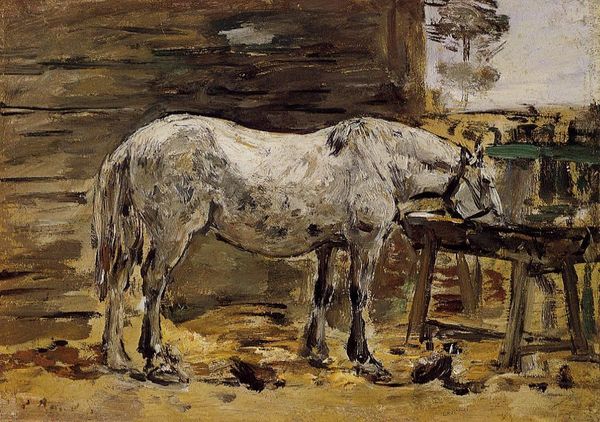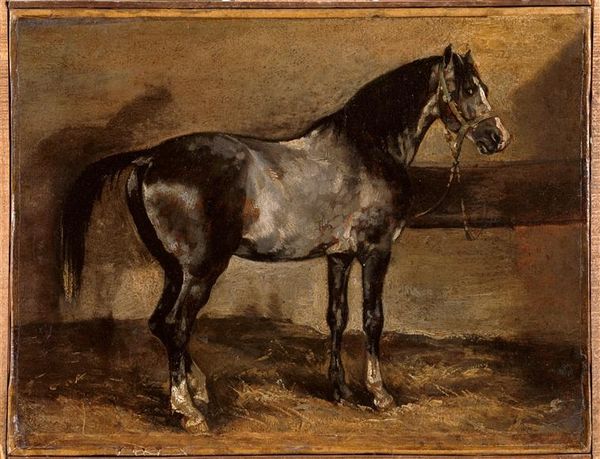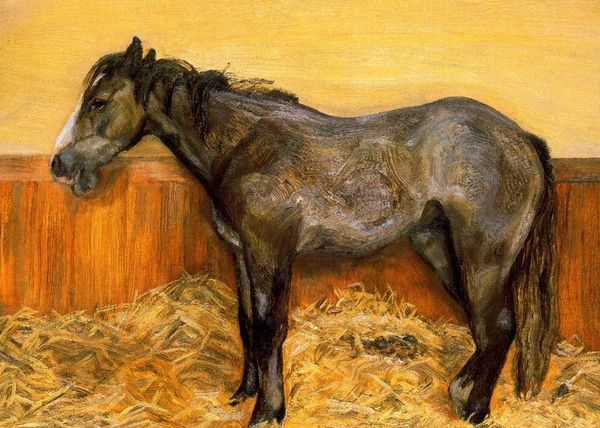
oil-paint
#
portrait
#
gouache
#
impressionism
#
oil-paint
#
landscape
#
oil painting
#
horse
#
genre-painting
#
watercolor
Copyright: Public domain
Editor: We're looking at Giuseppe Abbati's "Horse in the Sunlight," painted in 1866 with oil paints. It’s lovely; the light seems to envelope everything. I’m curious, how do you interpret this work beyond just a depiction of a horse? Curator: It’s fascinating how Abbati, a member of the Macchiaioli group, uses light and shadow not just representationally, but to convey a specific social commentary. Notice the position of the horse, its relation to the groom. Who benefits from the labor, who is being kept, and at what price? How might we link the depiction of labour here to broader conversations around the agricultural worker in 19th-century Italy? Editor: That's an interesting point; I was just seeing a peaceful scene. I hadn’t thought about it in terms of social dynamics. Are you suggesting the painting hints at class divisions? Curator: Absolutely. Consider the visual weight given to the horse versus the groom, or even the green gate which may represent social access or enclosure. The horse, representing wealth and privilege, is bathed in light, whereas the groom, though intimately connected, occupies a supporting role, existing on the periphery of that light. Do you think Abbati sympathizes with either figure here, or both? Editor: I see what you mean. I hadn’t considered the symbolism of the gate or how the lighting emphasizes their different roles. Perhaps there’s an ambivalence in the gaze – maybe it shows both their connection and their social separation. Curator: Precisely. Abbati’s innovative approach pushes beyond Impressionism to create complex social allegories with an intersectional awareness. It's an artwork that invites questions rather than offering easy answers about gendered and classed relationships. Editor: That’s given me so much to think about. I'll definitely look at this piece differently now. Thanks! Curator: It was my pleasure, too! It's about opening dialogues to expand our social conscious about labour, then and now.
Comments
No comments
Be the first to comment and join the conversation on the ultimate creative platform.
